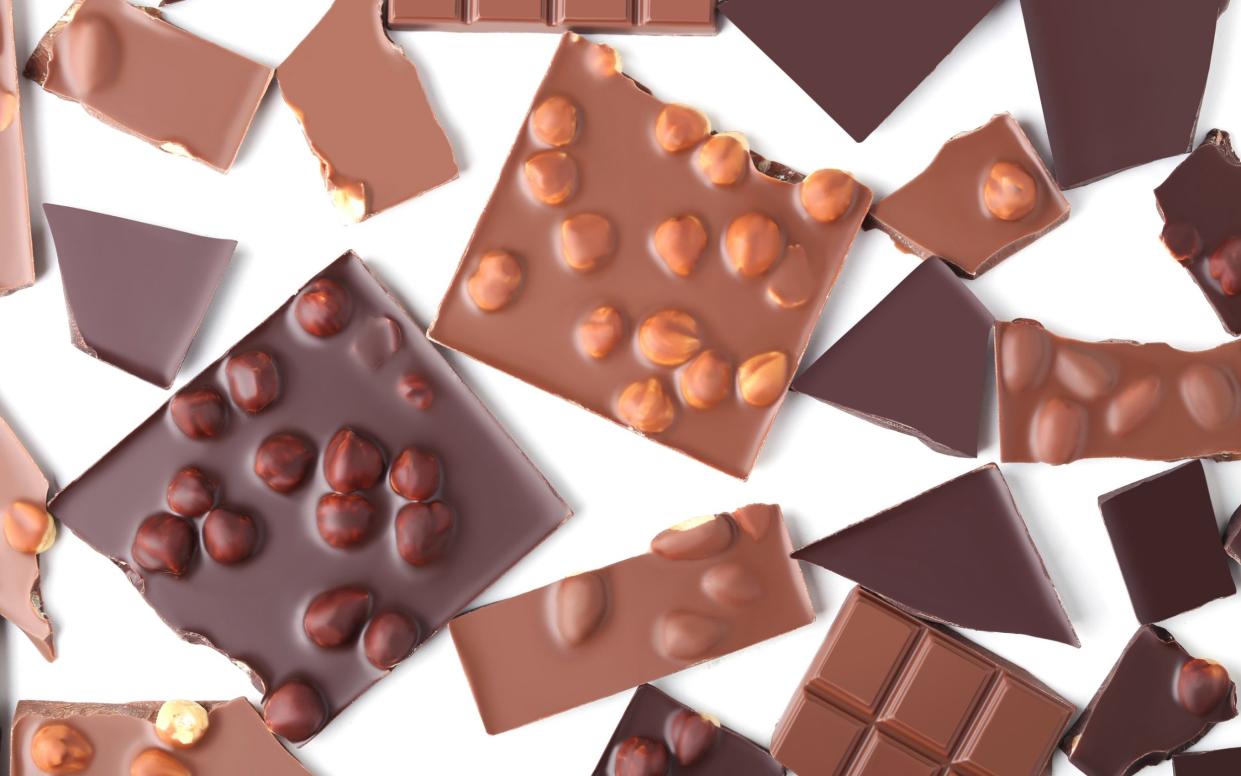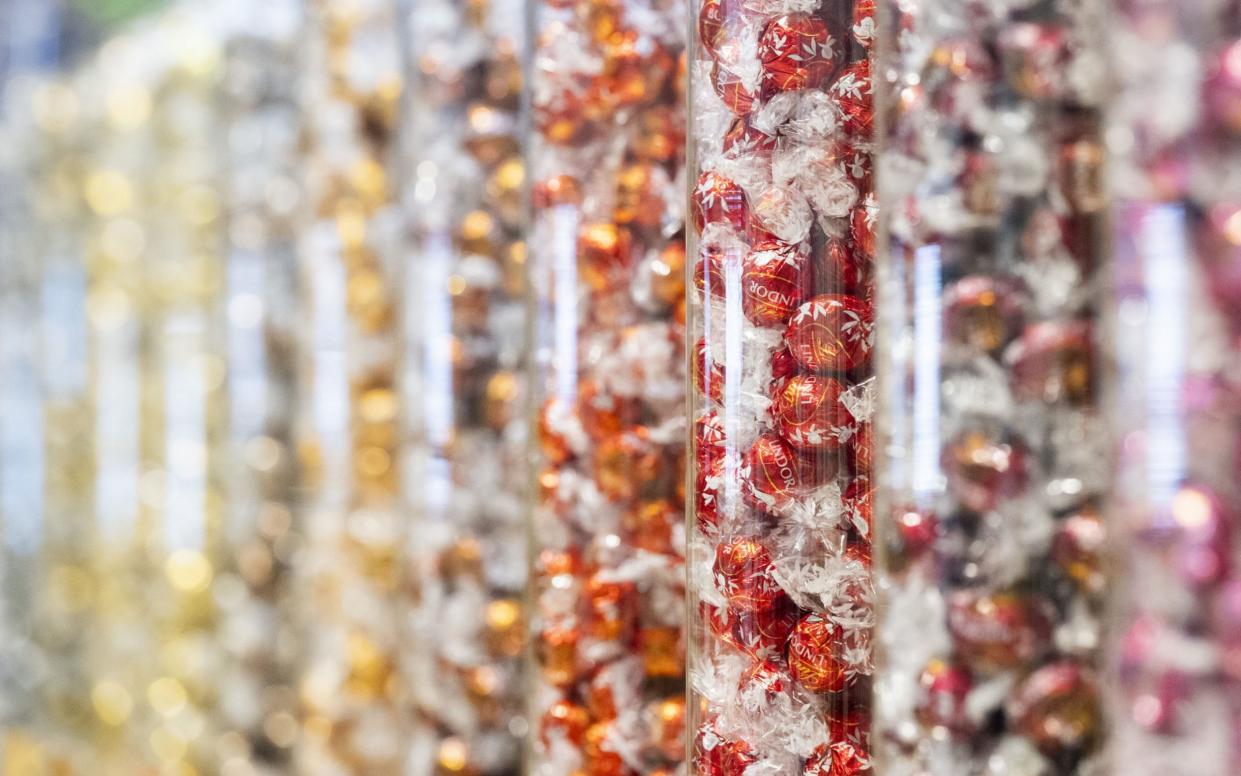A chocolate lover’s guide to surviving the shortage

People who design supermarkets know exactly what they’re doing. Before you approach the queue for the till your basket resembles that of a health influencer – all pulses, natural yoghurt and greenery.
But while you’re waiting, your eyes can’t help but fall upon the shiny display of chocolate bars; before you know it, a Twirl has found its way into your basket, a little treat tucked between the kale and the bag of lentils.
Until now, a chocolate bar was just that – a little treat. It was the perfect cheap thrill that wouldn’t break the bank but would bring a guaranteed dose of joy. Now, amid rising food inflation and a revolving door of shortages, chocolate has become the fastest rising item in our basket.
In the UK, chocolate prices have increased more dramatically than any other commodity in the past 12 months. In the first two months of the year they shot up by more than 40 per cent; on February 27, prices reached a 40-year high when, in London, cocoa futures traded at £5,827 per tonne. On the same day last year they traded at £1,968.
Behind the spike is a complex brew of climate change and global demand. Ghana and Ivory Coast – where 60 per cent of the world’s cocoa comes from – have been hit by hotter, drier weather which has impacted the cocoa harvest. Meanwhile, two major diseases have spread through the crop. Experts predict cocoa production will fall by 20 per cent this year, pushing down the global supply and inevitably pushing prices up.
Cadbury’s has warned it may have to raise prices or shrink its products, as has Nestle. Meanwhile, artisan chocolatiers are predicting chocolate could soon return to the days when it was a once-in-a-blue-moon treat rather than a daily sugar hit.
“If this trend continues, it isn’t going to be ‘I can have a bar a day, I can buy it whenever I like’,” chocolatier Paul A Young told the Telegraph, “it is going to be like it was when I was a kid, which was an occasional treat.”
Gabriella Cugno, the master chocolatier who made all the chocolates for the Wonka film, says chocolate couverture prices for her small business have increased by “around 20 per cent in the past year, with notices [from producers] they will increase more in the coming months”.
“I’ve had to up my prices which is a really tricky thing to do. Pricing is one of the most difficult things for artisan producers, especially at the moment – in a cost of living crisis, we don’t want to raise our prices so that it becomes really unaffordable, but we have to to keep afloat. If we keep the prices the same it’s not sustainable.”
The cost of other key ingredients like butter and sugar have risen too. “The cost of everything has gone up hugely,” says Cugno, speaking from her kitchen in Cardiff, where she is racing to create hundreds of exquisite chocolate eggs in time for Easter. “Chocolate is a bit more difficult to get hold of. A lot of producers have said there might be longer waitlists.”
While big companies could choose to deal with price rises by changing their recipes and reducing cocoa levels, artisan chocolatiers like Cugno are dedicated to producing a quality product with a high cocoa content. “I wouldn’t alter my recipe whatsoever. I would absolutely not compromise on flavour and quality. If the consumer wants a good quality product and we want to make a good quality product for the consumer, we’re just going to have to go with the increases.”
So if chocolate is set to become a luxury – and if, God forbid, it suddenly becomes harder to track down a bar when a craving strikes – how should we go about rationing it?
How to store your chocolate
If you want to make your chocolate last longer, you’re going to need to find a way to store it. Most chocolate takes a long time to go off, but it does lose some of its intensity if left unwrapped in the fridge or the cupboard.
The unique creamy but crisp texture can deteriorate too – fresh chocolate has that snap when you break off a piece, but turns molten in your mouth; old chocolate softens and becomes less pleasing to eat.
“The most important thing with chocolate is to keep it airtight,” says Cugno. “If it’s in a packet and you’ve opened it and can’t reseal it, it’s not totally airtight. I transfer it into a container.”
You can keep that container in the fridge if you like your chocolate cold, or a cupboard would do. “Really just the coolest place you can,” says Cugno.
And with the cheaper stuff, you can always freeze it. If you have never frozen a box of After Eights or a Gold Bar, try it – you’ll never look back.
The chocolate with the longest shelf life
If you’re partial to a Mars Bar or one of those addictive Lindt balls, you’re in luck. Mass-produced chocolate with a high sugar content “tends to last a bit longer because of the preservatives”, says Cugno.

You can eke out the smarter stuff too – especially if it’s a plain, unadorned bar. “If it’s just solid chocolate with no other fillings that would last a really long time,” says Cugno. Anything with caramel and praline tends to last pretty well, she says, because of the high cooked sugar content.
A fruity number might not fare so well. And if you do have a very fruity one knocking about (or really any chocolate with a strong flavour, like mint) beware storing it with your other chocolate – it could go the way of a box of Quality Street in which everything ends up tasting like the strawberry one.
Cugno recommends keeping your chocolate away from anything with a strong smell. “Chocolate can absorb those smells. If you leave a chocolate with a banana for instance or washing powder, the chocolate can end up actually absorbing some of that smell and you get an altered taste.”
How to make a little go a long way
So you’re down to your last six squares. How do you make them last? Baking with chocolate can stretch it, though if you want to make something taste really chocolatey you need “quite a lot of it”, says Cugno.
Chopping a bar into little chunks and baking it into a batch of cookies is probably the most efficient use, especially if you bulk out the dough with nuts. Even if each cookie only has three chocolate chunks in it, it’ll still satisfy a chocolate craving. This Ottolenghi recipe for chocolate, banana and pecan cookies, for example, only uses 100g of dark chocolate and makes 24 cookies. Eat one a day for five days and you’re still only consuming the same amount of chocolate as in two squares of a 10-square 100g bar – easy to do in a single sitting.
If you’re in need of a chocolatey pudding to feed a crowd that won’t require lots of choc, this lava cake uses just 20g of dark chocolate and a few teaspoons of cocoa powder.
Speaking of which, as chocolate gets more expensive, you could lean on cocoa powder to get your chocolate fix. Cocoa may also see a price rise, but as a store cupboard staple, it’s likely to remain an affordable option compared to a bar of dark chocolate.
A little goes a long way. A simple marble cake for example, like this one from Kirsten Tibballs, uses just 30g of cocoa powder. Or if you love the bitter, dark flavour of a really good chocolate cake but don’t want to fork out for three bars, try baking with cocoa powder and treacle, as in Xanthe Clay’s loaf cake.
And if nothing but pure chocolate will do, pick something dark. Most of us feel satisfied after a couple of squares of 70%, whereas it’s almost impossible not to eat an entire bag of Mini Eggs because of the sugar content.
“If you get quite rich chocolate, whether it’s artisan or not – something with caramel or something darker with less sugar – the flavour might last longer and it’ll have more impact,” says Cugno. “So you can actually get away with eating smaller amounts and having the same fix.”
Alternative ways to satisfy your cravings
Chocolate satisfies partly because of the balance of fat and sugar, which is very addictive. “With sweets it’s just sugar,” says Cugno, “whereas with chocolate you’ve got the sugar, the creaminess, and the actual chocolate flavour. And because it melts quite slowly in your mouth, it lasts a long time so you get a lot of flavour. It’s a whole mouthfeel. It’s an experience.”
Replicating that isn’t easy, but a dark caramel sauce, with some of those same sweet bitter notes that chocolate brings, could make a nice substitute. Try this Stevie Parle recipe with treacle and dates for a pleasingly dark toffee pudding.
Nut butters, meanwhile, can do a good job of replicating the mouth feel of chocolate. A date stuffed with almond or peanut butter, for example, fills your mouth with salty sweetness in a similarly satisfying way. Or take this almond and banana pudding, which could provide a good alternative to a chocolate mousse.
And if it’s chocolate ice cream you are craving? Try making a nutty alternative, like this simple peanut butter number from Stevie Parle, or Diana Henry’s salty-sweet tahini ice cream.


